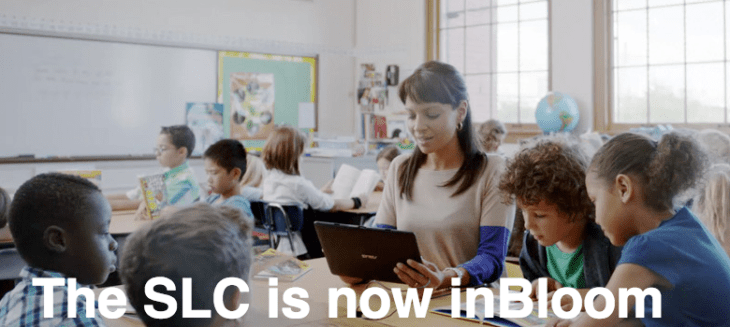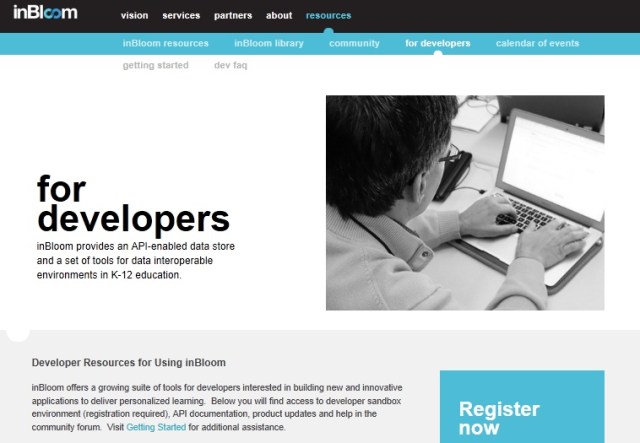In 2012, the buzz around education technology reached new heights and, with the new year now underway, the hype surrounding the potential transformative impact of technology on both higher and K-12 education continues. The examples are many, but the most salient, recent example would have to be the pilot that the largest university system in the world is set to launch, which will attempt to bring affordable, lower-division, remedial (and Udacity-powered) online courses to the California State University system.
Of late, we’ve seen growing interest in education technology across the board, from venture capitalists and entrepreneurs to state and federal governments. Some of the country’s most influential players in business and politics have also begun to pick up the conversation. Last week, Jeb Bush — the younger brother of former President George W. Bush, former Governor of Florida — penned an Op-Ed for CNN in which he discusses the importance of digital education — particularly its ability to unify the student population through the “ubiquity of its tools” … and … “maximize students’ potential to succeed by opening their eyes to a more diverse, customized array of learning techniques.”
What’s more, in his annual letter to supporters of The Bill And Melinda Gates Foundation and in subsequent interviews last week, Bill Gates discussed the the importance of giving schools better ways to collect, gather and analyze data and the enormous impact that big data can have in “saving” a troubled public school system in the U.S.
Considering that public spending on education has hovered around 6 percent of the country’s total GDP — in other words, considering the fact that billions are spent every year on education — the declining academic performance (outcomes and graduation rates, etc.) of American students is disappointing to say the least. Thus, the size of the problem is readily apparent — as is the opportunity — for students, businesses and the economy.
To wit: When News Corp. purchased edtech startup Wireless Generation for $360 million in late 2010, Rupert Murdoch said of technology’s potential to transform learning: “When it comes to K-12 education, we see a $500 billion sector in the U.S. alone that is waiting desperately to be transformed by big breakthroughs that extend the reach of great teaching.”
Why am I telling you all this? Besides a shared expression of the importance of digital tools, big data and personalization in the transformation of learning (and education) — and the size of the opportunity and impact they potentially represent — they have something else in common as well. Bill Gates, News Corp.’s Wireless Generation and many more have all in some capacity contributed to the development of a program called the Shared Learning Collaborative (SLC).
They’re getting involved — in a big way — for reasons like those detailed above. In fact, The Gates Foundation and the Carnegie Corporation (to name two) have collectively put $100 million behind the SLC. That would be an enormous investment for any education company, let alone for a non-profit EdTech startup (especially considering the investment comes in the form of grants, not venture capital).
So, why the interest? To use its own words, the SLC is an alliance of states, districts, nonprofits, foundations and companies that share the vision of “accelerating student achievement through personalized learning.” And while the organization first emerged in 2011, it’s kept quiet on the details of its plans — other than the fact that it set out to build a “set of shared technology services” that aim to enable states and districts “to connect student data and instructional materials” and integrate them more effectively for “educators, parents and students.”
It’s an honorable and important mission, to be sure, but up until now, that sizable commitment from Gates and Carnegie has been difficult to justify without any sense of how the organization actually plans to follow through on its ambitious goal.
Today, however, we finally get a glimpse into what the Shared Learning Collaborative has in store — and the degree to which it has the potential to transform education. This morning, the SLC has officially renamed and rebranded itself under the guise of a new non-profit startup called inBloom, which it has been quietly building and developing over the past 12 months. Simply put, the new non-profit intends to help transform education by providing entrepreneurs, schools and districts with a better, easier way to make sense of and utilize big data.
Of course, with support from the Gates Foundation, organizations like the Council of Chief State School Officers as well as state and federal institutions, it’s easy to worry that political and financial interests could have a big (counterproductive) influence on inBloom’s direction. However, inBloom CEO Iwan Streichenberger assures us that the company was designed as a non-profit from the beginning to keep special interests at bay, in order to create a tool that is data, platform and user agnostic — one that can help educators, schools and entrepreneurs unlock the value behind the mountains of educational data that have long been trapped in proprietary data silos and myriad software platforms.
This fragmentation and lack of portability has rendered data incommunicative, he says, stripping it of much of its utility and, really, its value. As such, he believes that no company, institution or state program — no matter how massive — can create the underlying, agnostic data resource that can allow applications, software, tools and platforms of all stripes to communicate with each other and make their data more actionable. But, with $100 million from backers, the support of dozens of companies, institutions and districts, non-profit standing and open-source technology working in its favor, there’s reason to believe that inBloom might be able to succeed where others have failed.
In discussing the state of education technology with a friend recently, we both agreed that the space has been abuzz with activity over the last year and, as a result, with hype. However, in talking to investors, I’ve found that, while many want to invest in education because of its import, size and technology’s potential transformation of the industry surrounding it, many are still balking. While early-stage venture capital has flowed freely into EdTech businesses, many later-stage investors don’t see the ROI yet that would warrant big investments. There are still too many unproven concepts (and undercooked business models), and too many features-masquerading as companies.
The experimentation will no doubt prove valuable in the long-run either way, but the hope is that 2013 will be the year that our attention, investment and focus moves beyond the novelty, the hype and the features to the core of what really works.
InBloom is just getting started, but certainly the visions and the potential is there. School districts are racing to adapt materials and assessments for the Common Core State standards, publishers are moving to keep up with the digitalization of content and new academic requirements. Meanwhile, teachers and schools are being flooded with data, new startups pitching tools, software and apps at every turn, while still wrestling with archaic infrastructure, data in multiple formats — really, just a broken system.
LearnSprout and Clever arrived in 2012 to help create a standardized set of APIs that could allow developers to unlock Student Information Systems — the data silos that contain much of a school’s essential student data — and create applications that can interface with this data and leverage it to create tools that actually make a difference. InBloom wants to go several steps further and create a standardized, open-source data architecture that isn’t just limited to Student Information Systems, but is instead inclusive to Learning Management Systems and applications — any portal in which schools and districts are storing critical learning data.
The new non-profit wants to make data integration and content search easy — to enrich learning applications by connecting them to systems and information that live in a variety of formats and places, while helping reduce costs for schools. The CEO says that he wants inBloom to offer a comprehensive view into each student’s history, their progress and help startups, developers, companies and schools create the tools that will give them greater insight into how students can improve their learning outcomes and personalize their learning paths.
The company also wants to help educators locate standards-aligned instructional resources from multiple providers, matching them to students’ individual needs. “We want to create more choice for schools and educators,” Streichenberger says, but not in a way that is overwhelming or makes their lives more confusing. “But in a way that allows startups and companies to create different versions of learning analytics, for example, with teachers being able to choose the one that’s best for their needs.”
In turn, the CEO hopes that this will provide a rising tide for all boats, lifting the monetization potential, the ability for companies to make money, by allowing them to work within the same educational niche, while specializing within that niche. Whether it be a tool for a learning management system, or an assessment application for a particular state, district or school system — based on the data it shows, which inBloom allows them to access — companies can create specific tools for that particular need.
“InBloom lets us compile and access assessment data from more than a dozen different systems,” said
Tom Stella, Assistant Superintendent of Schools, Everett, MA. “This information, paired with relevant content that maps to a student’s individual needs, helps maximize a teacher’s time and a student’s learning potential by letting them focus on in-class teaching and learning.”
This means that inBloom’s framework can allow technology providers and startups to develop and deploy their applications and products without having to spend time building custom connections to each state and district’s data source. Naturally, this has the potential to solve many of the costs and pain points that developers, teachers, schools and startups face when building technology for schools. And that’s huge.
Today, 21 education technology companies have already announced plans to develop apps that will work with inBloom’s open API, including Agilix, BloomBoard, CaseNex, Clever, Compass Learning, ConnectEDU, CPSI, Ellevation Education, eScholar, Global Scholar, GoalBook, Gooru, KickBoard, Learning.com, LearnSprout, LoudCloud, PBS, Promethean , Scholastic, Schoology and Wireless Generation.
On top of that, nine states (representing over 11 million students) are currently participating in the development and pilot of its services, including Colorado, Delaware, Georgia, Illinois, Kentucky, Louisiana, Massachusetts, New York and North Carolina. Five of those states have already selected districts to be part of the pilot testing.
The inBloom CEO also went out of his way to say that the company, while open-source and focused on inter-communication, data portability and scalability, still holds data privacy as a “top priority,” and the platform is compliant with the Family Educational Rights and Privacy Act (FERPA), he says. And for developers interested in getting a look, the company plans to release the code behind inBloom at some point this summer and will be demo-ing the platform at SXSW in March.
This is just an general introduction to inBloom’s new platform, we hope to have a more detailed breakdown in the coming weeks, so stay tuned. For now, find more on the initiative at home here.

